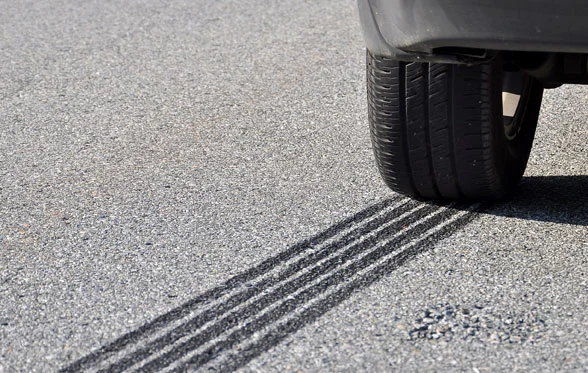To allow for the introduction of a long term strategy on the reduction of CO2 emissions from heavy duty vehicles in the European Union, the European Commission first had to develop a method of accurately determining the fuel consumption and CO2 emissions of heavy duty vehicles. This led to the development of the Vehicle Energy Consumption Calculation Tool (VECTO), which is a calculation tool that allows the fuel consumption and CO2 emissions of specific vehicle configurations to be calculated using input data measured from the components and systems that make up the completed vehicle, e.g. fuel consumption data from engine dynamometer testing of the engine, rolling resistance data for the tyres, aerodynamic drag information for the completed vehicle, etc.
The use of the VECTO calculation tool to establish fuel consumption and CO2 emissions figures for heavy duty trucks was mandated by EU Regulation No. 2017/2400. Following the implementation of this Regulation, it is now mandatory for fuel consumption and CO2 emissions figures to be determined for the majority of new heavy duty trucks before they can be registered in the European Union.
The scope of (EU) 2017/2400 originally covered N2 and N3 category vehicles, i.e. trucks and tractor units for articulated vehicles, which have a GVW exceeding 7,500kg, with some exclusions and exemptions. However, to allow for the full implementation and monitoring of the European Union’s policies on the reduction of CO2 emissions from road transport, it will be necessary to determine the fuel consumption and CO2 emissions of a greater range of heavy duty vehicles than is currently specified.
As part of this process, the European Commission have recently published two new EU Regulations relating to the fuel consumption and CO2 emissions determination of heavy duty vehicles; (EU) 2022/1362 and (EU) 2022/1379.
(EU) 2022/1362
EU Regulation No. 2022/1362, which was published on August 5, 2022, is a new Implementing Regulation covering the performance of heavy trailers with regard to their influence on the fuel consumption and CO2 emissions of the motor vehicles towing those trailers. This new Regulation applies to O3 and O4 category vehicles, i.e. trailers and semi-trailers, which have a maximum mass exceeding 8,000kg, are fitted with box shaped bodywork and have no more than three axles.
Obviously, a trailer will have an effect on the fuel consumption and CO2 emissions of the motor vehicle towing it, and the magnitude of that effect will be dependent on the precise specification of the trailer or semi-trailer. However, because trailers and their towing vehicles are interchangeable, and different towing vehicles have different fuel consumption and CO2 performance characteristics, it is not possible to determine a specific fuel consumption figure and a specific CO2 emissions figure for a trailer that would be applicable when that trailer is used in combination with any potential towing vehicle. Therefore, for the purposes of this Regulation, the European Commission have adopted an approach where the specific characteristics of an individual trailer, i.e. its mass, overall dimensions, aerodynamic performance, rolling resistance, etc., are assessed using a specific "trailer"version of the VECTO calculation tool to determine its performance with regard to fuel consumption and CO2 emissions. The performance of the individual trailer is then compared to the performance of a standard, generic "reference"trailer to determine an "efficiency ratio". By calculation, this "efficiency ratio"can be applied to the fuel consumption and CO2 emissions figures for an individual towing vehicle to determine the fuel consumption and CO2 emissions performance for that specific towing vehicle and trailer combination.
Recognising that aerodynamic devices, such as "boat tails", rear aerodynamic flaps, side skirts and vortex generators, can significantly improve the aerodynamic performance of trailers and semi-trailers, the Regulation also includes provisions which allow the manufacturers of such devices to separately certify the performance of their components and systems.
Compliance with this new Regulation becomes mandatory for all in scope trailers and semi-trailers manufactured from January 1, 2024 and first registered from July 1,2024.
(EU) 2022/1379
EU Regulation No. 2022/1379, which was published on August 12, 2022, is an Amending Regulation which introduces significant amendments to (EU) 2017/2400. Amongst the revisions introduced by (EU) 2022/1379 is an expansion to the scope of (EU) 2017/2400 to include:
- N2 category "medium"vans, trucks and tractor units having a GVW between 5,000kg and 7,500kg.
- M3 category buses and coaches having a GVW exceeding 7,500kg.
In addition, (EU) 2022/1379 also introduces new provisions to allow for the fuel/energy consumption and CO2 emissions determination of pure electric vehicles, hybrid vehicles, dual fuel vehicles and vehicles fitted with technologies such as waste heat recovery systems and advanced driver assistance systems.
Compliance with the new requirements introduced by (EU) 2022/1379 becomes mandatory for all vehicles manufactured from January 1, 2024.
